| The KV-1 Heavy Tank |
|---|
|
|
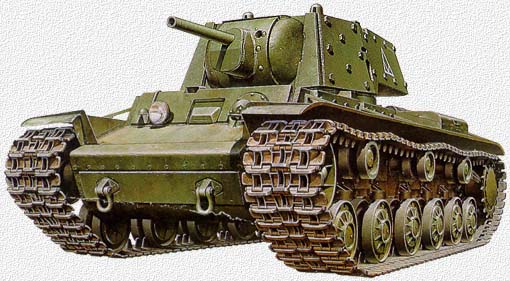
The KV-1e Heavy Tank Model 1941
| The KV-1 Heavy Tank |
|---|
|
|

This tank first appeared in the Winter War. It was a general test of this tank. Having excellent protection and a powerful diesel engine, it was heavily armed with a 76.2 mm gun and three machine-guns. This tank was a king of battlefields until the introduction of German 75 mm guns. It had a bow machine-gun, a coaxial machine-gun, and a rear machine-gun to prevent infantry assaults from the rear. The chassis of this tank was used for several of assault guns and tanks. Later, the KV-1 was upgraded to the much more common KV-1s modification. In October 1938 a large group of students visited the SKB-2 of the Kirovsky Tank Factory (Leningrad). The new twin-turret SMK (Sergey Mironovich Kirov) heavy tank was in the works at that time. The new students received the task of designing a new heavy tank, based on the SMK, but with a single turret. During their work they were faced with many problems. Some of the problems resulted from the unreliability of the planetary transmission, for example. At that time the Czech S-2a tank was tested at the Kubinka proving ground (the High Command planned to buy some). Some students were ordered to check this tank and steal all the good ideas... |
In December 1938 it was contemplated to build two twin-turret SMK tanks, but J.Y.Kotin (Chief of the SKB) and I.M.Zaltzman (Director of the KTZ) offered a new idea - to build one SMK and one new single-turret heavy tank. This idea was welcomed, but final approval was only given by order #45ss of the Defense Council of the USSR on 27 February 1939. The new tank received the KV (Klim Voroshilov) designation. Work on this tank began on February 1, 1939, even before official permission was given to start. Work on the new tank went quickly, on April 9 the technical mockup was finished and by September 1, 1939 the first tank was already built and tested. |
The KV tank inherited several ideas and features from its predecessor - the SMK: the hull, elements of the transmission, optic devices and so on. It had the powerful V-2 diesel engine. There were two guns mounted in a single turret: one 76.2 mm gun and one 45 mm gun. It had only one machine gun: the 7.62 mm DT TMG mounted in the hull. On September 5, 1939 the KV was sent to Moscow where it was shown (on September 25) to the Soviet Government. After that the tank was returned (on October 8) to Leningrad, it was sent to the proving ground for tests. However, after the Winter War began, the tests were cancelled and the tank was sent to the front. |
The KV, SMK and the T-100 tanks served in 91st Tank Battalion, 20th Heavy Tank Brigade where the KV tank was the best. It must be noted that the 45 mm gun was already replaced with one coaxial 7.62 mm DT TMG and another one DT TMG which was placed in the turret rear to protect the tank from rear infantry assault. The KV-1 heavy tank officially served in the Red Army from 19 December 1939 when V.Molotov signed order #443ss. |
 The KV-1e is going to battle in outskirts of Leningrad. September 1941. |
In May 1940 the yearly production plan was increased from 50 units to 200 units. The ABTU was worried that the tank had still not completed its tests and might contain many hidden defects. |
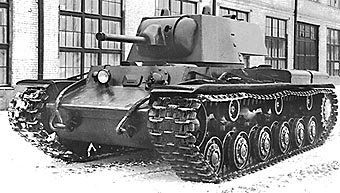 The KV-1 Heavy Tank Model 1939. |
So, in May 1940 the tank tests began again on the Kubinka proving ground and also near Leningrad. After running 2648 km some serious defects were found in the transmission, chassis and gear-box. The engineers of SKB offered to stop production until all the defects were eliminated. However, the production plan was already signed, so the production continued anyway. |
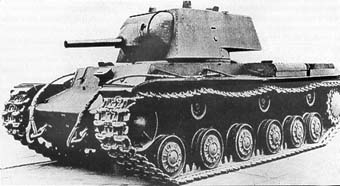 The KV-1 Model 1939 heavy tank. |
At the end of 1940 the 76.2 mm L-11 tank gun was replaced with the new, more modern F-32 gun. This version of the KV was also known as the KV-1 model 1940. This vehicle received a new, more poweful V-2k diesel engine of 600hp. In the spring of 1941, in response to German information, a new decision was made: to increase the armor of KV-1 using additional armor plates (armor shields). New modification was named KV-1e ("e" means "ekranirovaniy" or "with shields"). |
At the beginning of the Great Partiotic War the Red Army possessed 639 KV-1 tanks. In 1941 the KV-1 heavy tank was able to destroy any German tank. There are some accounts when a single KV-1 tank delayed whole German armies for days. A single KV-1 made a stand near a road not far from Ostrov (Baltic states) and delayed the whole German tank army. |
The battle casualties: 7 German tanks, an anti-tank battery, one 88 mm AA-gun and all it crew, 4 halftracks "Hanomag", and 12 trucks. This tank was destroyed on the next day with German 88 mm AA-gun. The KV-1 tank could be destroyed only with 88 mm heavy AA-guns or with 105 mm howitzers. The 105 mm howitzer couldn't penetrate the KV's armor but could immobilize it with a track hit. However, most KV's weren't destroyed by enemy, they were lost because of technical failures and abandoned by their crews because of a lack of repair time. Here is a report from the commander of the 10th Tank Division, 15th Mechanized Corps: "We have lost 56 tanks in total (of 63 tanks - Valera) where 11 tanks were knocked out in battle, 11 lost without a trace, and 34 were abandoned by their crews due to technical failures". In the 8th Tank Division, 43 tanks (of 50 tanks total) were lost, where 13 were destroyed in battles, 2 sunk in swamp, and 28 were abandoned due to breakdowns. |
In July 1941 the F-32 gun was replaced with a new 76.2 mm ZIS-5 gun -an advanced and more powerful gun. It was similar to the F-34 gun that was mounted on the T-34/76 medium tank. The new KV-1 model 1941 also had an improved cast turret (instead of welded) with thicker armor. In autumn 1941, the Kharkov Factory was evacuated. Therefore 100 KV-1 tanks were equipped with M-17 petrol engines that were normally used for T-35 heavy tanks. In 1942, work on a new, lightened model of the KV-1 was undertaken. The new tank was named KV-1s where the "s" suffix meant "skorostnoy" or "fast." Many tanks and projects were based on the KV-1: KV-8 flame tank and several experimental machines including a tank with an 85 mm gun named "Object 220." |

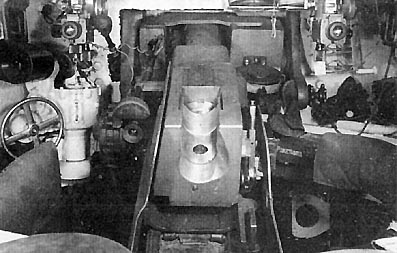


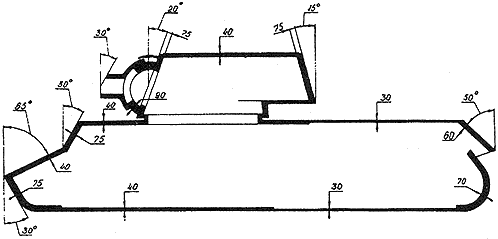

| REFERENCES: The profile of the KV-1 Specification of Soviet tanks Specifications of Soviet tank guns The Glossary of Soviet Terms and Abbreviations |
Sources:
"M-Hobby" #5-6 1997 V.Gagin "Heavy breakthrough tank Klim Voroshilov" Poligraph, 1996 Janusz Magnuski "Ciezki Czolg KW", 1997 "Soviet heavy tanks in WWII" Tornado "Bronekollektsiya" #1 1996 |